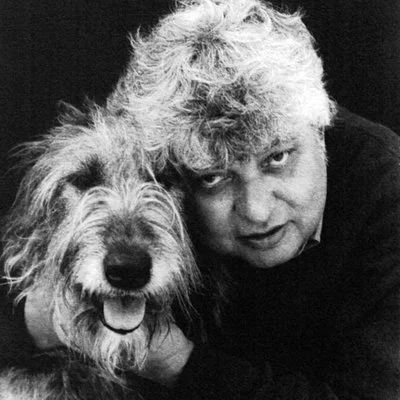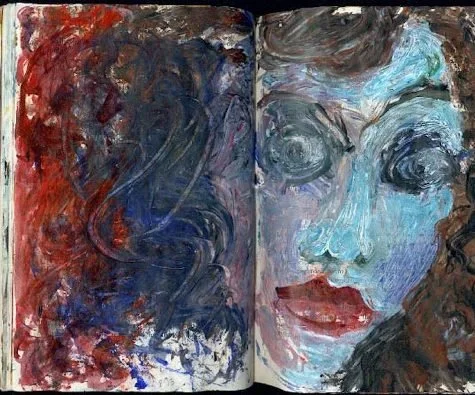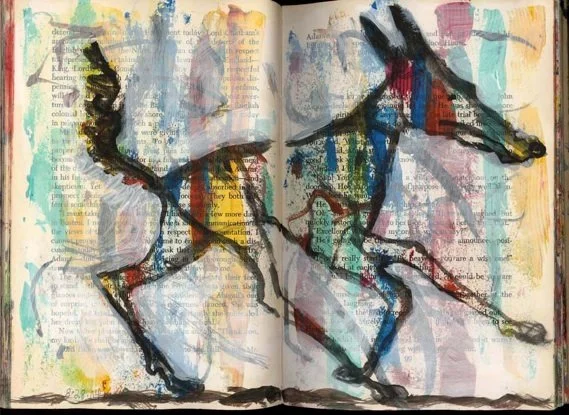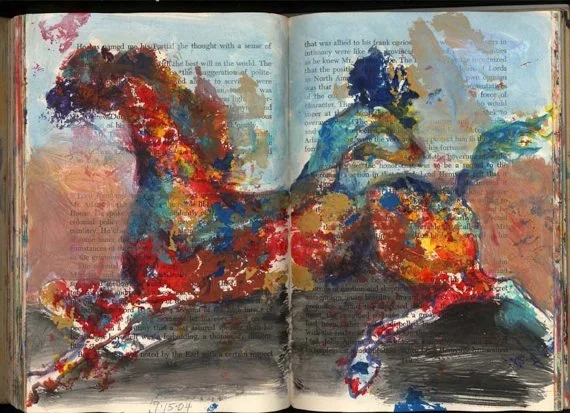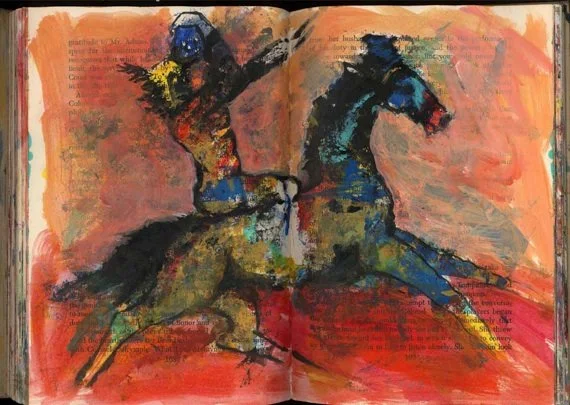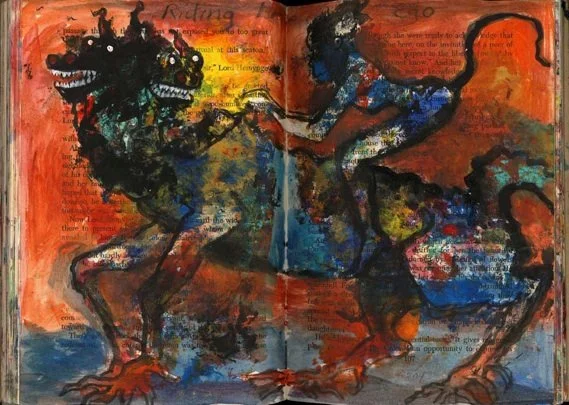Foreword written by Indra Sinha for Virginia Peck’s Journal Anima
Indra Sinha’s novel, Animal’s People, was a finalist for the 2007 Man Booker Prize and it was the
Winner of the 2008 Commonwealth Writers’ Prize:
Best Book from Europe & South Asia.
Once in a jumble sale, I found an old novel. Its cover was mostly torn away revealing a title page with a handwritten dedication, slowly dissolving in an English drizzle-mist. It was a wretched sight to anyone who loves books. All books are valuable. There is always something interesting about them. If not the text it might be an engraving, or the type, or the quaint old advertisements you sometimes find before the endpapers.
I picked up this damp, unloved novel, thinking I would save it, and to my astonishment found it was one of my own. The blue blurring lines had been written for a friend. Such humbling moments are no doubt good for us, but not too often. I still have that book. I’m looking at it as I write this, and thinking that such a miserable tome could have no kinder fate than to be picked up, not by its author, but by a stranger, a passerby with a rare and restless genius, who would give it new life as a ravishing work of art.
You’ll gather that I’m a fan. I admire – no, love – nay adore – Virginia Peck’s hand-painted Journals, but I don’t believe a word of her story.
Virginia says that one day, finding a discarded copy of Natural Light, a novel by Ethel Gorham, she was seized by the idea that she would take it home and use it as a sketchbook. Virginia had not read the novel and was not interested in trying to make images out of what was written on the page. Rather she would begin working by instinct, almost with eyes closed, waiting for what would come, and when shapes appeared in the paint, in the layers of colour and brushstrokes, she would work with them, and let them become whatever wanted to emerge.
Blue Lady-Journal 1
Driftwood-Journal 1
Her first Journal quickly filled with marvelous images. A blue lady stares out at us with startled eyes. What is she seeing? Driftwood sculptures are heaped together, a ring of them like dancers, or a wood-henge washed in by the tide. Bacchantes abandon themselves to dance watched by a pair of still Pharoah hounds. A pensive youth, looking a lot like Raphael’s portrait of Agnolo Doni huddles next to an exotic tribal face. What is going on here?
Dancing Bacchantes-Journal 1
Portrait and tribal face-Journal 1
I first saw these pictures as small images, neat rectangles on a web page. Even then they filled me with excitement. Inside were wonderful things, fizzing with life and energy, and so exhilarating to paint that Virginia found herself unable to wait for the pages to dry, and had to start working in a second book.
Frog-Journal 2
Zebra-Journal 2
Journal II (John Fowles’ The French Lieutenant’s Woman) seemed more reflective, but is no less brilliant. A mad tiger lifts its head and cries defiance, there’s an excellent frog and a zebra caught in a maelstrom of colour. Most of the pages are given to dancing couples and pairs of heads. Two nudes rest against a wall. I could swear that the one on the right is pointing a gun but her hand is empty.
Two heads-Journal 2
For her next trick, our illusionist chose Nicholas Wycoff’s The Braintree Mission, a 1957 first edition. (It’s me, not Virginia who cares about such details.) This became Journal III, the one you have in your hands. This is Virginia’s trickster journal, full of magical shapeshifting beings that are constantly transforming themselves.
Trickster Coyote-Journal 3
Swimming Horse & Rider-Journal 3
Woman Riding Horse-Journal 3
Here is the Trickster Coyote of innumerable Indian legends. Here are imps and magicians, prancing spirit horses, a winged deer, a woman rodeo-riding a bison, a monkey woman riding a two-headed dragon. Turning the pages of this Journal is like watching a ceremonial spirit dance.
Circus Rider-Journal 3
Woman Riding Bison-Journal 3
Monkey Woman Riding Two-Headed Dragon-Journal 3
Was Virginia using these abandoned books as casual sketchbooks? – well it’s a good story but as I said I don’t believe a word of it. What she is doing is something darker, far more powerful, and dangerous. In the female figure clinging to the backs of wild beasts we see a woman and artist fighting to come to terms with the worst things in her life.
I first heard of Virginia through her famous series of Buddha portraits. To catch that perfect smile, to paint peace and silence with a brush is a remarkable achievement, requiring flawless control. Such control, as the Buddha himself taught, is gained only by grappling with one’s demons and learning to love them. A battle requires a battleground and where else do demons haunt but in imperfect things, despised and outcast, like unloved, unwanted books?
I was doing a series of interviews with artists and asked Virginia if I could include her. This led to one or two video calls across the ocean. I asked if she would hold up one of the Journals.
Looking through the computer screen, what I wanted more than anything was to reach through and take it in my hands.
Imagine the pleasure of holding one of those books, heavy with paint-encrusted pages that have slightly buckled and no longer lie flat, so that it doesn’t quite close, but bulges, giving you glimpses of what’s inside. Imagine the colours. The subjects. The textures. The feel of dried on paint. The crackle of a page as, very carefully, it is turned.
I love being a writer, but looking at Virginia’s painted Journals makes me want to give up words and be a painter.
Indra Sinha, Sussex, England

